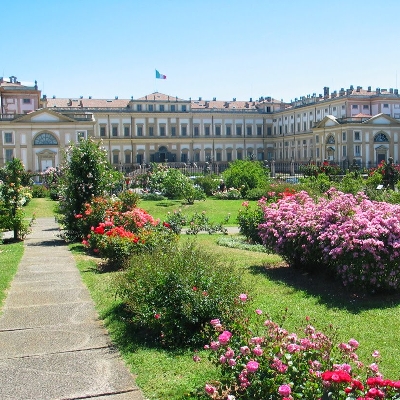Monza Royal Park
Characteristics
The Monza Royal Park can boast a record: it is the largest enclosed park in Europe (the boundary wall is 14 km long). It is also the fourth largest park in Europe (685 hectares). The green oasis - the most important in Brianza also for its rare and exotic plants - surrounds the splendid Palace of Monza and contains other historic structures such as farmhouses and villas. The whole location is a great attraction that reproduces the traditional type of Monza and Brianza countryside and now features a series of interesting thematic routes.
Municipalities involved
Monza, Biassono, Vedano al Lambro, Villasanta.
Accesses
There are three main accesses:
- in Monza, from Viale Cesare Battisti;
- at Vedano sul Lambro, from Via S.Stefano;
- at Villasanta, from Via Farina.
There are also numerous other pedestrian accesses from all directions.
Brief history
The Royal Park lies along the river Lambro to the north of the Palace and the Royal Gardens of the Empress of Austria, Maria Theresa. After conquering Italy, in 1805 Napoleon Bonaparte wanted to create a model farming estate and hunting reserve next to the Palace. The following year, his Viceroy in Italy, Eugène de Beauharnais, ordered the construction of the imposing green area when he purchased, in a series of three blocks, land that was mainly owned by the Church and by the noble Durini and Gallarati Scotti families. To enclose the area with a boundary wall, some parts of the old city walls of Monza were also used. The design of the work was entrusted to the architects Luigi Canonica (a student of Piermarini, who designed the Palace), Giacomo Tazzini and, later, Luigi Villoresi. In 1807 the boundary wall was erected, to a design by the architect Carlo Fossati.
Design of the Park
Canonica divided the Park territory into three areas:
- the area to the south of Villa Reale, left as a garden and free countryside;
- the area to the north, where a wood was created (Bosco Bello), for hunting;
- the area along the Lambro, as wetland.
Canonica designed the main thoroughfare that runs from north to south (Viale Mirabello), connecting all the areas, which can be reached by means of a network of secondary avenues, and adapted the water supply system.
Flora
A skilfully distributed selection of historic species from the Brianza area can be admired in the Park (copper beech, hornbeam, chestnut, bald cypress, yew, conifers) as well as other exotic species (ginkgo biloba, magnolia, Austrian black pine, Lebanon cedar, etc.).
Fauna
The Park is the habitat of mammals and typical bird life of the farming and wooded areas.
Villas, Farmhouses, Mills and Bridges
There are two important historic villas in the vast enclosed area of the Park: Villa Mirabello, the older one (17th century) and Villa Mirabellino (also known as Villa Amalia). Among the farmhouses (a fundamental element of farming life) are the Frutteto (now home of the School of Agriculture), the Cavriga, the Cernuschi and the San Fedele. Among the mills - which maintain some of their functions - the Cantone (agricultural monument), the Asciutto (used as a residence) and the San Giorgio (rented for farming purposes). Two bridges over the Lambro: the Grazie Vecchie (15th century) and the Catene.
Contact Information
- Monza
- Lat 45.60381259263949, Long 9.275184154510498
http://www.reggiadimonza.it/IL_PARCO/127
Contact info
- Monza
- Lat 45.60381259263949, Long 9.275184154510498
- http://www.reggiadimonza.it/IL_PARCO/127

